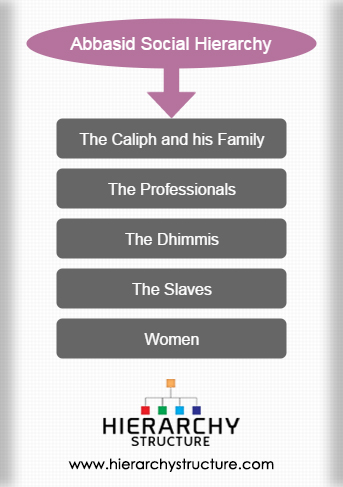After the Islamic prophet Hajrat Muhammad, the Abbasid caliphate was the third caliphate that ruled the Islamic world. They were a Meccan origin family who overthrew the Umayyad dynasty in 750 CE. The dynasty declined in the year 1258 CE. Their claim to the position of the Caliph, the highest leader of the Islamic world, was derived from their descent from Abbas ibn Abd al-Muttalib, who was one of the uncles of the prophet Muhammad. Thus they called themselves the rightful heirs of the prophet, unlike the Umayyads. The Abbasid caliphate also was against the secular character of the Umayyad caliphate.

Under the Abbasids, the caliphate transformed to a large extent. This also means that the society at the contemporary period also experienced some changes. The society under the Abassid Caliphate was hierarchically divided, and was heterogeneous in character with several social groups living in the society. The hierarchical pyramid had the family of the Caliph at the top and the slaves and women at the bottom of it, and in between there are people from other religions, and people who were professional. The structure is as follows.
- The Caliph and his family- At the top of the societal ladder stood the Caliph. He was the theocratic leader of the whole Islamic world. The family of the Caliph also enjoyed a position of utmost supremacy. The Caliph had enormous power on his hands, and in general men from his family were also quite powerful in the society and commanded much respect.
- The professionals- In the second rank of the Abbasid social hierarchy stood the professional. This section accommodated men of various skills, such as doctors, teachers, merchants among others. They were also respected in the society for the service they provided, but their authority was much less than that of the family members of the Caliph. During this time there was much improvement in the cultural life and also in the technological sphere, and that meant that these professionals were respected for their works.
- The dhimmis- Next rank in the hierarchical structure belonged to the dhimmis. The dhimmis are people of other faith, such as, the Christians, Jews etc. they were also known as the protected people. They were given the status of being protected if they recognized the superiority of Islamic family and pay their taxes regularly. In such cases they were given the right to live freely under the Caliphate.
- The slaves- At the lowest rank of the pyramid stood the slaves. However, the position of the slave in an Islamic society was much different from that of other societies. Slaves can belong to any race, and they are not always tortured and abused. They could also rise above their ranks in some cases.
- Women- The position of the women was abysmal in this society. They were treated almost like the slaves. They did not enjoy any rights whatsoever. Even female infanticide reemerged in the society. Adult women were seen as commodities.
The social hierarchy present in the Abbasid society is thus explained.
